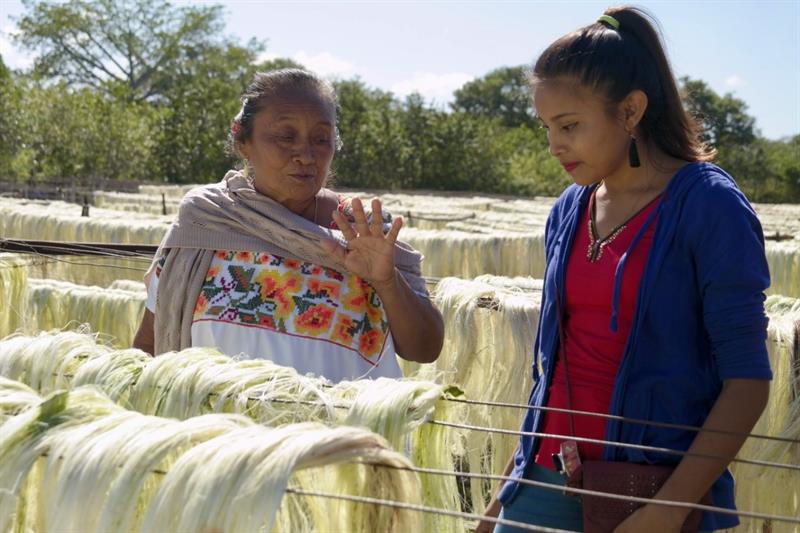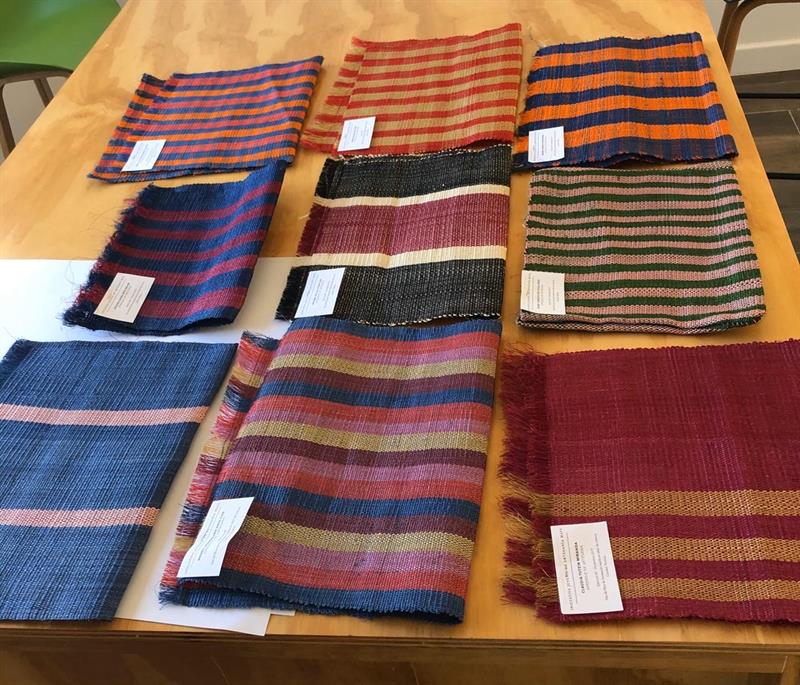Findings Staff Report | Sept. 8, 2020
Artisan. Traditional and historical textiles.
Smart. Reactive. Wearable technology.
Polar opposites, right?
University of Cincinnati faculty researcher Ashley Kubley doesn’t think so—she likes to think about them together; designs for the future informed by the tried and true practices of the past.
 "I’m always running concurrent projects trying to bridge old methods with new technology,” says Kubley, an assistant professor of Fashion Design at the College of Design, Architecture, Art and Planning. “I’m passionate about the advancement of craft culture, as well as the implementation of sustainable practices in the apparel and textiles industry.”
"I’m always running concurrent projects trying to bridge old methods with new technology,” says Kubley, an assistant professor of Fashion Design at the College of Design, Architecture, Art and Planning. “I’m passionate about the advancement of craft culture, as well as the implementation of sustainable practices in the apparel and textiles industry.”
She has been developing one of those projects for 15 years now.
It started back before Kubley came to UC. She was teaching at the Savannah College of Art and Design, in Georgia, and had started taking groups of textiles students, researchers and professionals on trips to Mexico to study the country’s rich history in textile crafts.
On one such trip she met Angela Damman, a designer making fine textiles products from natural fiber grown in the Yucatan Peninsula.
Damman had cultivated relationships with local artisans, some of whom were the last individuals in the area using traditional weaving techniques with fibers endemic to the area called henequen and sansevieria. Damman spent two years experimenting with the fibers to make them softer and find new ways to use them.
But master artisans expressed to her their interest in passing on the traditions and skills to a younger generation and Kubley and Damman began to envision a program where young women could learn about these fibers and how to weave them from their elders, and also learn about the business of design and product development.

With research funding from the URC and a few other sources the duo was able to hire two research assistants, both from Mexican universities, to help them create a culturally appropriate program. Funding also helped fix some of the artisans broken tools so that they could teach and learn to weave again.
The first training program was held in 2019 in a town called Hocabá. They teamed up with a government agency, Secretary of Culture and Arts for Yucatan, and held pre-interviews with participants to construct the most useful curriculum.
Five master artisans were paid to teach eight training sessions and act as mentors to eight students, who were paid a fair wage to attend the sessions. The program also offered four unpaid enrichment excursions to museums, factories and design workshops in the area, which most of the participants attended, Kubley says.
“Young women in Mexico dream of becoming doctors and engineers—and they should,” Kubley says, “But we also want to show them that if they can become skilled artisans. They can go on to become designers and businesswomen and make a living doing that.”

An exhibition of their work had been planned at a museum in the Yucatan capital of Merida, but the new coronavirus has temporarily put the show on hold until 2021. They’re currently working on another way to display the work of the students and recognize the artisan mentors as master craftswomen and guardians of this endangered craft. Some of those students are now working with Damman to create new product lines.
Exit interviews and surveys showed high marks for the program, and Kubley and Damman are working on bringing it to other artisan communities in Mexico.
“This work is not just economical, it’s sustainable,” Kubley says, “There’s a new viability to these products, as demand grows for supply chains with transparency, all over the world.”
The University Research Council (URC) Arts, Humanities, and Social Sciences Advancement Program annually supports worthy activities – with meaningful impacts – like this one.
URC funding opportunities for this academic year will be announced before the end of October. Bookmark the OoR’s Funding Opportunities webpage and check it often to learn when the details are announced.
Photos provided by Yara Ruiz, Valentina Reyes and Angela Damman.
Top photo: Program participants (back row, left to right) Roxanan Elena Moo Balam, Ariana Guadalupe Franco Echeverria, Delma Avila Moo, Maria Delfina Ek Chan, Fatima Leticia Euan Cab; (front row, left to right) Maria Alejandra Matos Cauich, Claudia Tutzin Miranda, Maritza Araceli May Ton.
Second photo: Master artisan Doña Maria Reyes Maas Cab talks to apprentice Wendy Dzul Can about an endemic fiber used to make bags and other woven products.